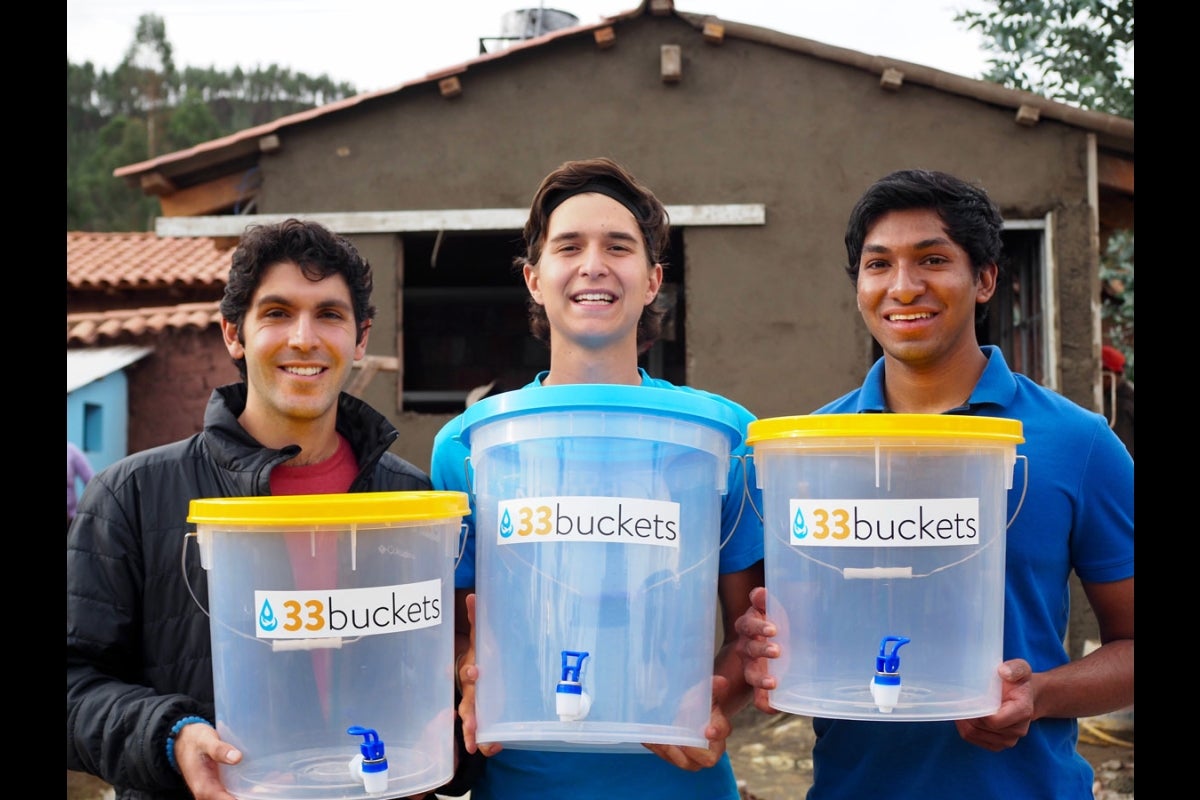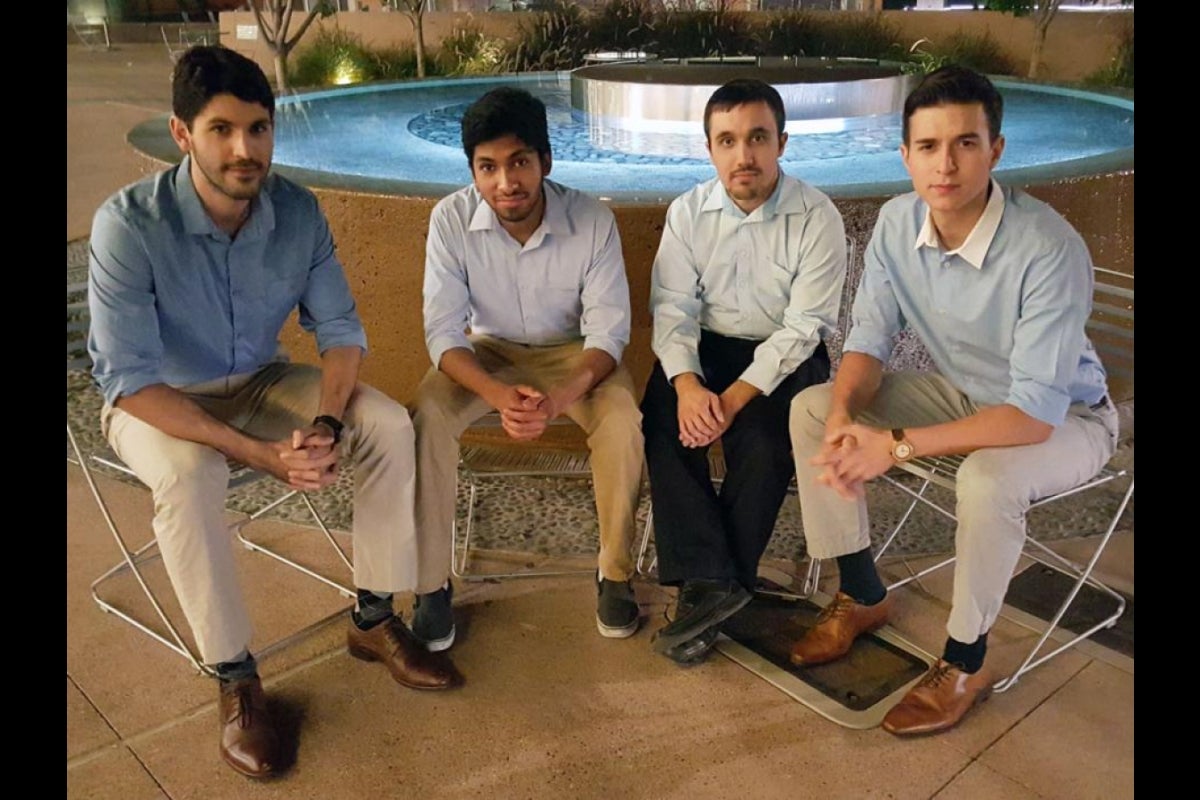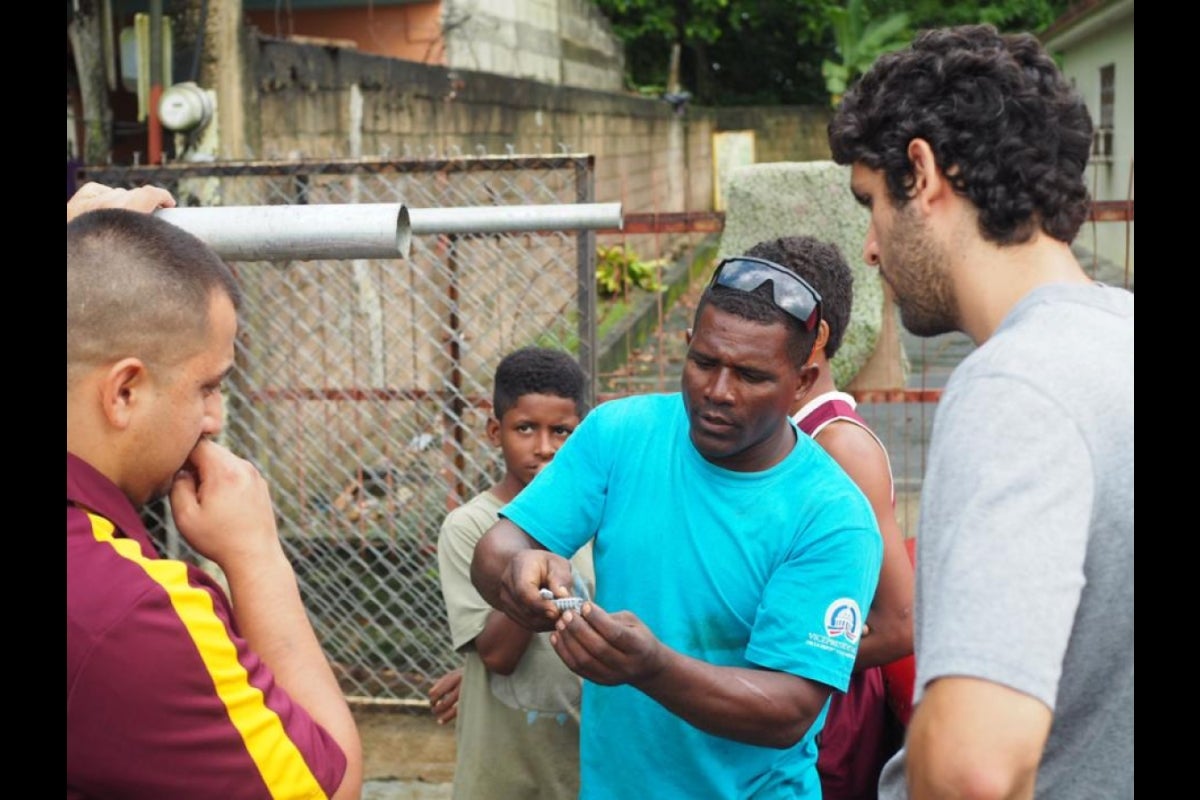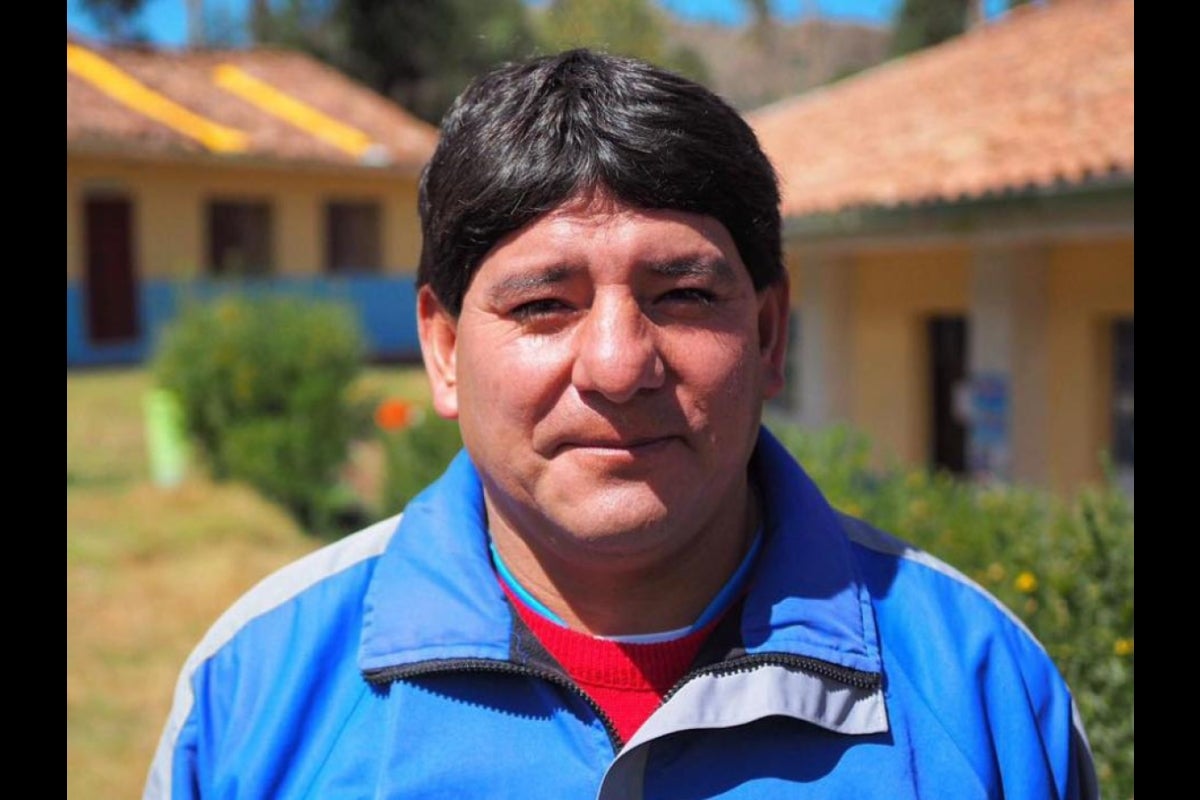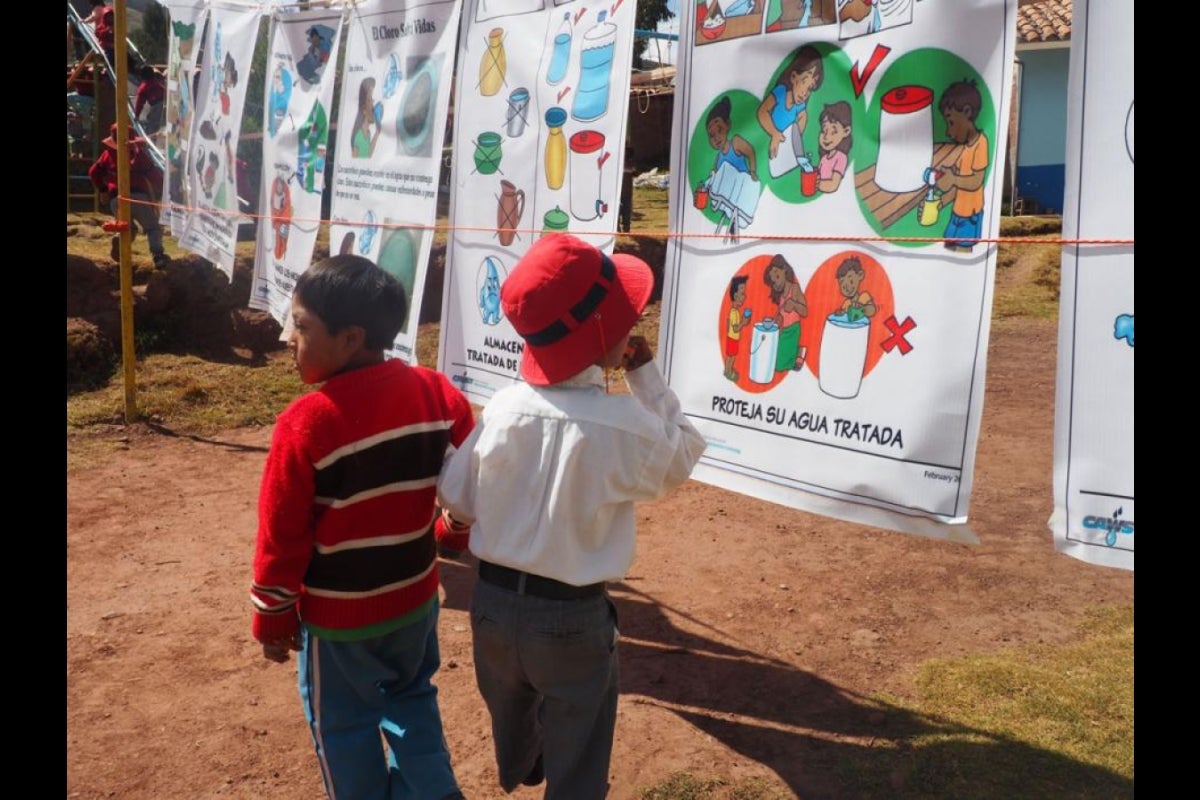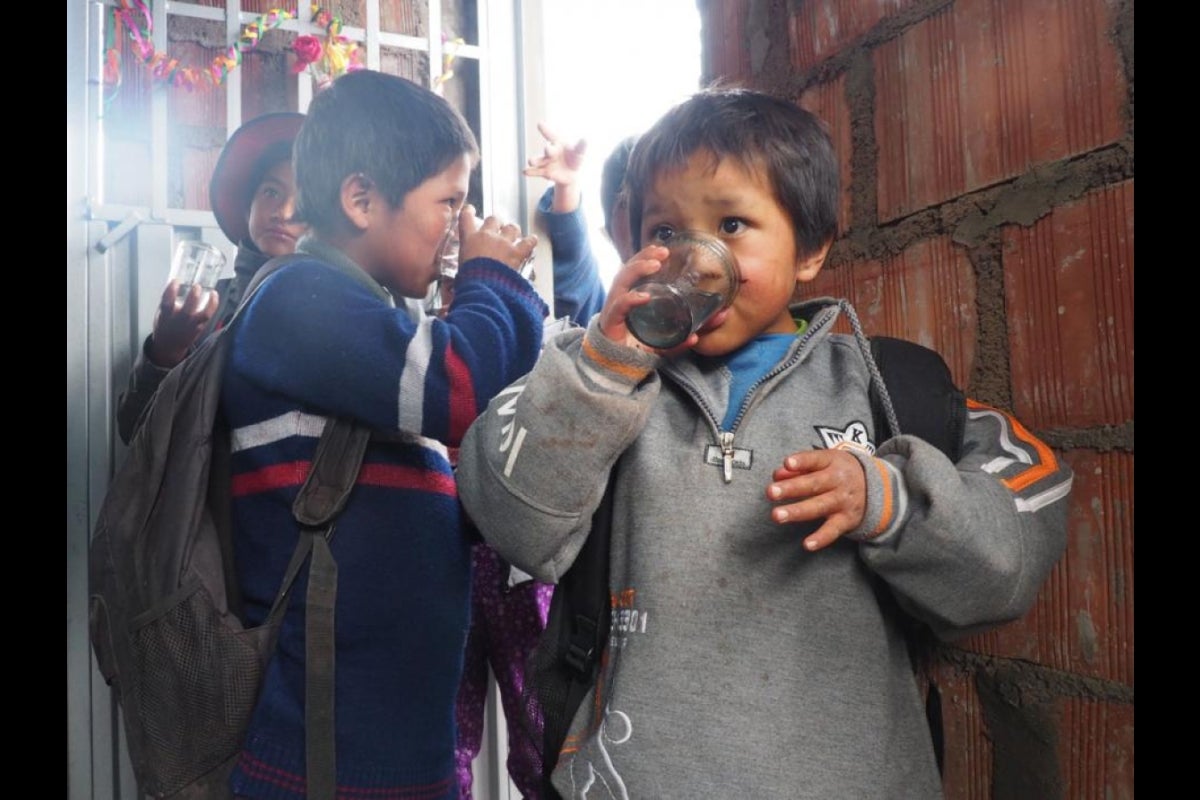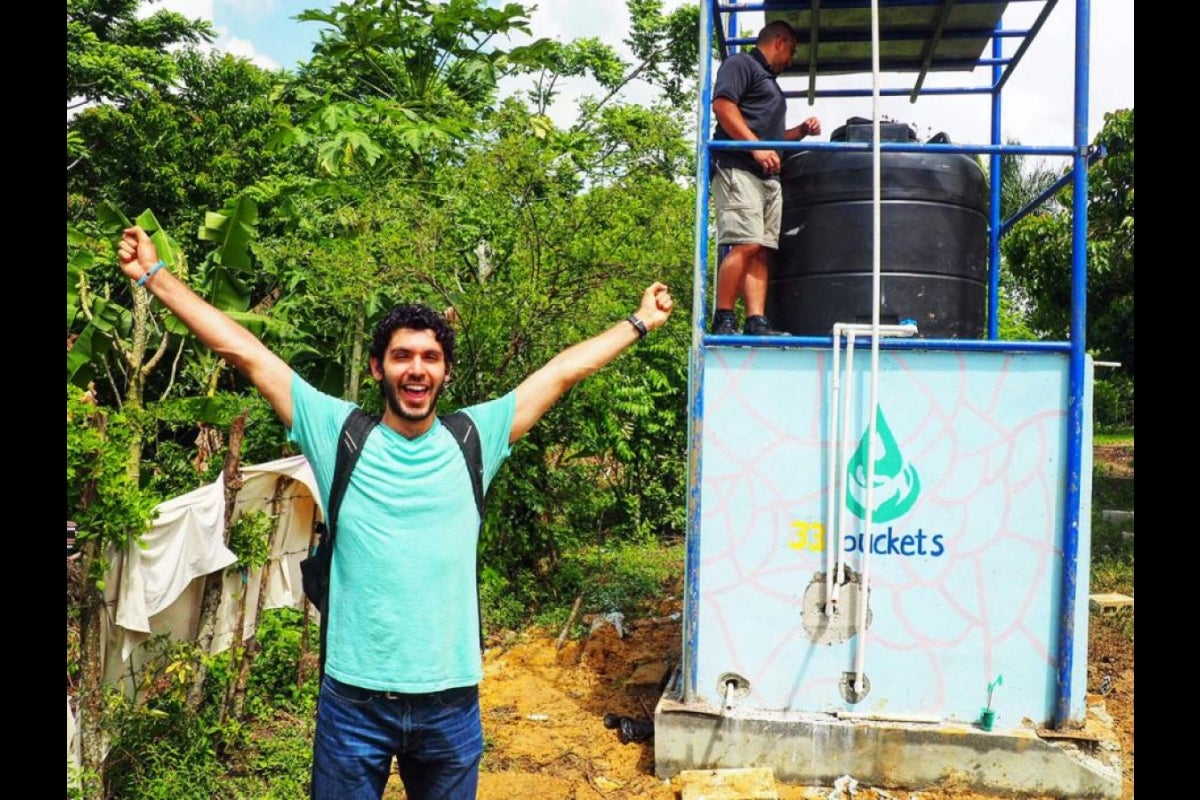World problems don’t get much bigger than the global water crisis, but innovators from Arizona State University have created a purification system and distribution model that has helped thousands of people in developing nations. The group’s work has expanded this summer, and it promises to grow.
The team — known as 33 Buckets — has traveled to Bangladesh, the Dominican Republic and Peru to install their small, customizable water filters and to train community leaders to maintain the devices and sell the clean water they produce.
Each aspect, team members say, is crucial for long-term success, removing contaminants isn’t enough.
“We have the technology to solve the clean water problem in the world,” said Swaroon Sridhar, who studies biomedical engineering and handles the group's global partnerships. “What hasn’t been addressed is an effective method of global distribution. So we changed our focus to distribution and components for filtration as well as education, which is just as important to solving the water issue.”
The efforts started in 2010 as part of the Engineering Projects in Community Service Program in ASU’s Ira A. Fulton Schools of Engineering when the team designed a bucket-based filtration system for a girls’ school in Bangladesh that would eliminate arsenic, which has the atomic number 33. The system had to be redesigned when they realized arsenic wasn’t the contamination source — but the name stuck.
In time, the group — Mark Huerta, Vid Micevic, Paul Strong and Sridhar — created a system that now helps more than 12,000 people in Bangladesh. Last summer, they launched beyond the EPICs program and started working with international nonprofits. Last month, 33 Buckets launched clean water programs in the Dominican and Peru.
“So much of that first project was spent initially learning about the issue and then designing a model that would make the best impact long-term for the community,” Strong said. “Now, we have our model and philosophy of focusing not just on design, but also on full self-sustaining, community-run projects.”
In the Dominican, members of a rural community had to walk more than a mile to fetch water from a cave. They couldn’t rely on a system of pumps and pipes because it had been poorly maintained and the groundwater source it drew from was contaminated by bacteria and coliforms, including E.coli. But now, more than 1,000 people have access to their own source of clean, affordable water using the 33 Buckets system.
In Peru, meanwhile, about 1,500 people near Cusco now get clean water from a local business that employs the 33 Buckets method. They had been depending on a water supply with bacteria levels that were 2,000 times over a limit set by the World Health Organization.
The problem of water access isn’t solved. Around the world, about 1.8 million people don’t have clean drinking water and about 8 million die of water related diseases each year. The World Economic Forum calls the global water crisis the biggest threat to the planet over the next decade.
The World Health Organization estimates that more than half of the global disease problem can be solved by clean water access and sanitation and hygiene education.
The 33 Buckets team has set out to address the problem one community at a time. Their approach allows different filters and components to be swapped in and out based on a community’s specific needs.
“The design depends on what we find, what’s locally available and what can be maintained,” Strong said.
Huerta, the group’s CEO, said the customizable system is “really good for rural areas because it’s gravity-fed, no electricity required. The maintenance is also really easy. Only a few minutes a day, and it lasts for seven to 10 years.”
Community involvement, Huerta said, is key, “especially at the early stage. If people are invested, they’re excited and realize the importance and want to dedicate their time.”
In Peru, the team relied heavily on school principal Agripino Cordova Tocrez.
“He was so invested and confident in being able to make things work. He was a huge asset the entire time,” Huerta said. “In the Dominican Republic it was the same thing — incredible people with very interesting stories in how they came from so little and how much they value community development.”
In the Dominican, Anderson Jean and Altagracia Jean Dosil, who live near the provincial capital Monte Plata, stepped up to lead the effort.
The 33 Buckets team will stay in contact to make sure the program runs successfully. They’ll use a Google spreadsheet to see real-time water sales in Peru. And Jean and Jean Dosil will send weekly sales and maintenance reports.
In Bangladesh, meanwhile, local leaders are exploring ways to expand distribution. “We’re trying to help them finance it through water sales in the local community close to where the filter is set up,” Sridhar said.
The group also has received requests from organizations in developing nations around the world, but for now they want to focus on additional work in Peru, where they’ve established strong connections.
“Each country has its own unique circumstances, culture and connections in finding building materials and filter components, so there’s a learning curve to working in each country,” Huerta said.
He added that the group has identified two at-risk sites near Cusco, where “we plan to make assessment trips within the year and implement the projects next year.”
More Science and technology

ASU and Deca Technologies selected to lead $100M SHIELD USA project to strengthen U.S. semiconductor packaging capabilities
The National Institute of Standards and Technology — part of the U.S. Department of Commerce — announced today that it plans to award as much as $100 million to Arizona State University and Deca…

From food crops to cancer clinics: Lessons in extermination resistance
Just as crop-devouring insects evolve to resist pesticides, cancer cells can increase their lethality by developing resistance to treatment. In fact, most deaths from cancer are caused by the…

ASU professor wins NIH Director’s New Innovator Award for research linking gene function to brain structure
Life experiences alter us in many ways, including how we act and our mental and physical health. What we go through can even change how our genes work, how the instructions coded into our DNA are…

